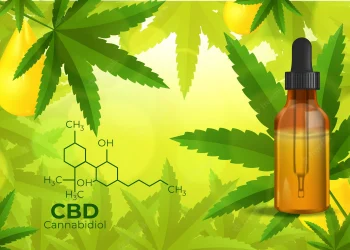The use of cannabis, marijuana, hashish, or ganja for recreational and curative purposes, is as old as time. But what is all the fuss about?
Cannabis is a plant in the Cannabaceae family classification. These are angiosperms or flowering plants and are grouped with a large variety of other scented herbs scattered throughout mild parts of the Northern Hemisphere.
Included in the Cannabaceae family, is the infamous species of Cannabis Sativa L. This species is subdivided into different plant types with distinctive characteristics, namely Cannabis Sativa, Cannabis Indica, and Cannabis Ruderalis, a lesser-known variety. There can be quite confusing when it comes to different cannabis plants, read this for clarification.
Smoking and Vaping
Vaping utilizes flavoured canisters of broad spectrum, full spectrum, or isolate cannabinoids. The canisters are placed into an atomizer which vaporizes the product to be inhaled via a mouthpiece. Absorption again happens via the membranous tissue in the lungs. You can check out Dr Dabber for some of the best vaporizers.
CANNABIS SATIVA L
Sativa
Sativa is the preferred variant of cannabis for adult recreational use. This plant contains high levels of THC (Delta-9-tetrahydrocannabinol) that give the user a feeling of elation and an intoxicating euphoria.
Indica
Cannabis Indica is said to relieve bodily aches and discomforts and gives a body a high. Its application is mainly medicinal, and it is obviously less popular than the more potent Sativa.
CANNABIS VS MARIJUANA VS HEMP
Cannabis
Cannabis is the correct scientific name for all plants hosting cannabinoid components. Cannabinoids are chemical substances that entice receptors in the brain to respond in a particular way. THC promises a high, Cannabidiol (CBD) relieves discomfort and pain in a variety of ways, and Cannabinol (produced when THC is activated), is an immune inhibitor and anti-inflammatory wonder drug.
Other compounds in cannabis include terpenes (unsaturated plant oils), and flavonoids, phytochemicals that guard against bacterial and viral infections in plants.
Marijuana
Marijuana and Mary Jane are derogatory, slang names initially given by those people opposed to cannabis used for recreational purposes. Traditional use of marijuana included smoking the flowering buds or extracting and refining oils from the inner fibers (hura), outer fibers (bast), stalks, or buds. The seeds do not yield a lot of oil and are not usually used for this purpose.
The high THC content in marijuana causes a heady high of rapturous proportions and can impair mental and physical functionality.
Hemp
Hemp is the mellow middle child of cannabis and is used for a variety of industrial and therapeutic purposes. It is a fast-growing strain of Cannabis Sativa and one of the oldest plants cultivated for use in textile production.
Hemp is non-psychoactive as it contains less than 0.3% of the mind-altering compound THC. The cannabidiol in hemp is carefully extracted to produce hemp oils (CBD oils), with wide-reaching restorative utilization. Products may be consumed orally through capsules or edibles, inhaled through vaping, or ingested through tinctures placed under the tongue. For topical application, salves and lotions may be applied directly onto skin, muscles or joints for near-instantaneous relief.
Hemp seed oil is rich in Omega 3, 6, and 9 fatty acids and has been hailed as the new superfood. It packs a nutritious, energetic punch and is used by vegans and meat-eaters alike, as a dietary supplement to help support a healthy body and mind.
THE EFFECTS OF MARIJUANA (THC)
Smoking and Vaping
When marijuana is smoked as full spectrum CBD flowers or pre-rolled joints, THC and other chemicals enter the lungs where permeable membranes allow easy access to the bloodstream in higher concentration.
Vaping utilizes flavored canisters of broad spectrum, full spectrum, or isolate cannabinoids. The canisters are placed into an atomizer which vaporizes the product to be inhaled via a mouthpiece. Absorption again happens via the membranous tissue in the lungs.
Sublingual Application
CBD oils or tinctures can be administered sublingually, under the tongue. Mucous films under the tongue accept the drug via tiny blood vessels and deliver it promptly into the bloodstream.
Oral Ingestion
Edible cannabis products or capsules have to be processed by the gastrointestinal system of the body. The user’s weight and metabolic competency can influence the rate of absorption of the drug into the system.
What Happens Next?
Cannabinoids mimic the brain’s chemical anandamide and trick the brain into recognizing and accepting the intruder compounds as normal. The drug is essentially given carte blanche to alter normal brain functions such as the experience of pleasure, memory, critical thinking, concentration, and movement.
Normal brain function may be altered in different ways. Users could experience intoxication, ecstasy, and relaxation with enhanced sensory perception. Other effects include an altered sense of time, uncontrolled laughter and the munchies, an inexplicable increase in appetite.
Although it is rumored that cannabis users cannot overdose on marijuana, some consumers experience feelings of anxiety, fear, and panic while under the influence. This is particularly true of inexperienced or over-zealous users.
In extreme cases, consumers may experience acute psychosis which manifests as hallucinations, delusions as well as temporary or permanent schizophrenia.
It is very important for prospective buyers of cannabis products to know the terminology and jargon at play. Ensure that the product you buy is of excellent quality and has been carefully formulated, evaluated, and tested for safe consumption.
Carefully check ingredients. Quality CBD oils and produce are free from artificial flavoring and additives and utilize superior carrier oils.
Lastly, understand your needs and expectations. Research, review, and revise your options. You don’t want to chase the rush just to be left high and dry.






